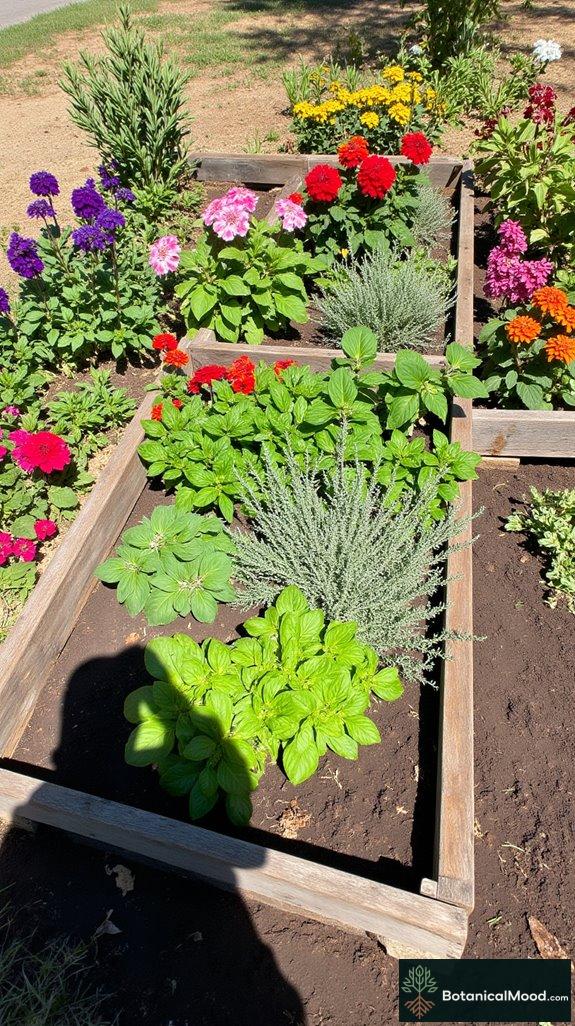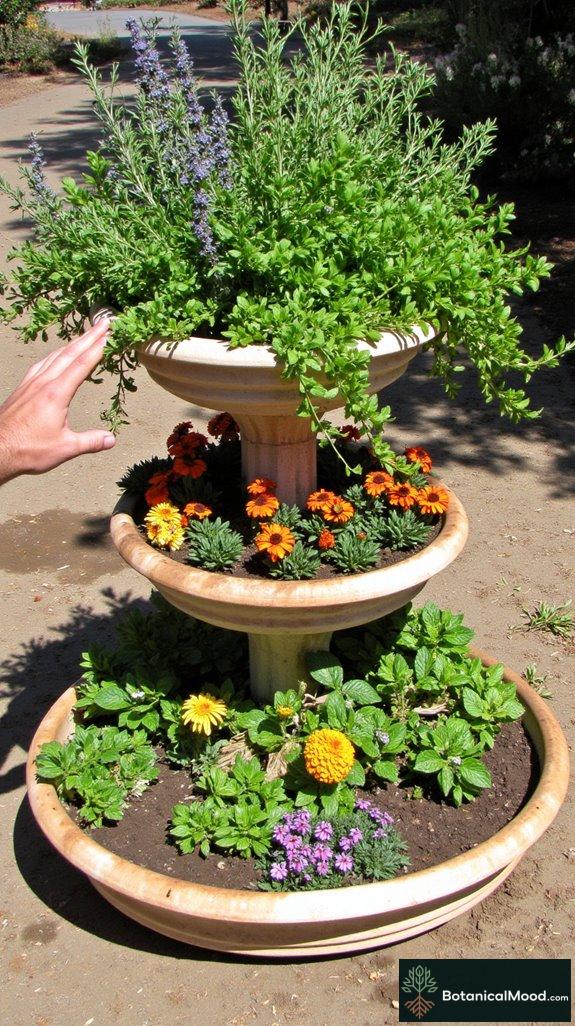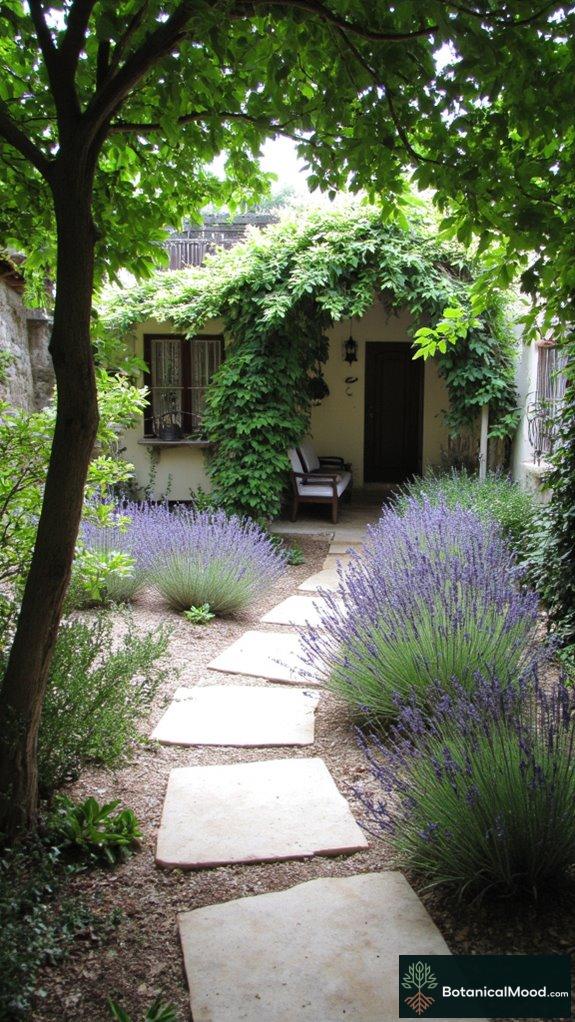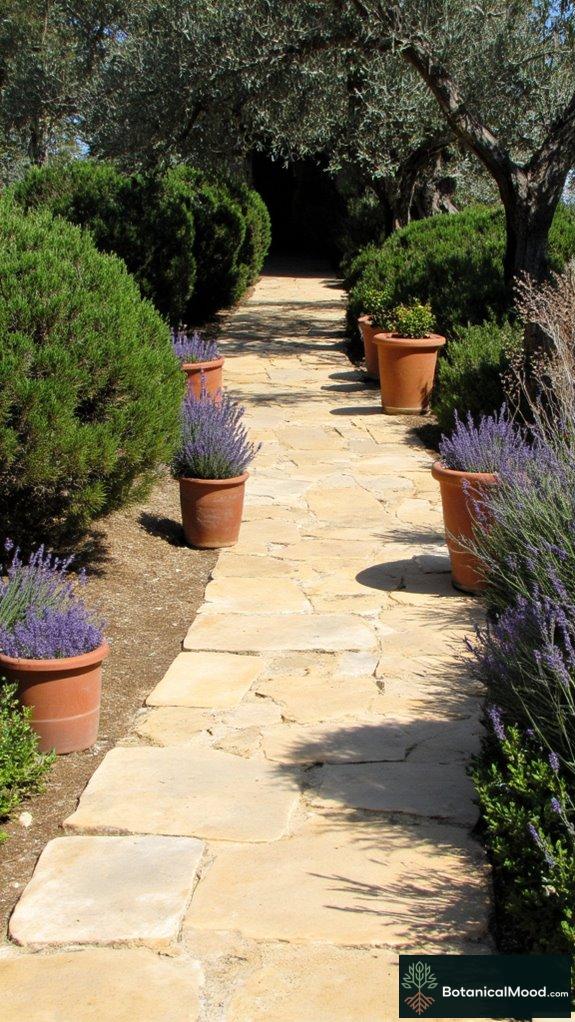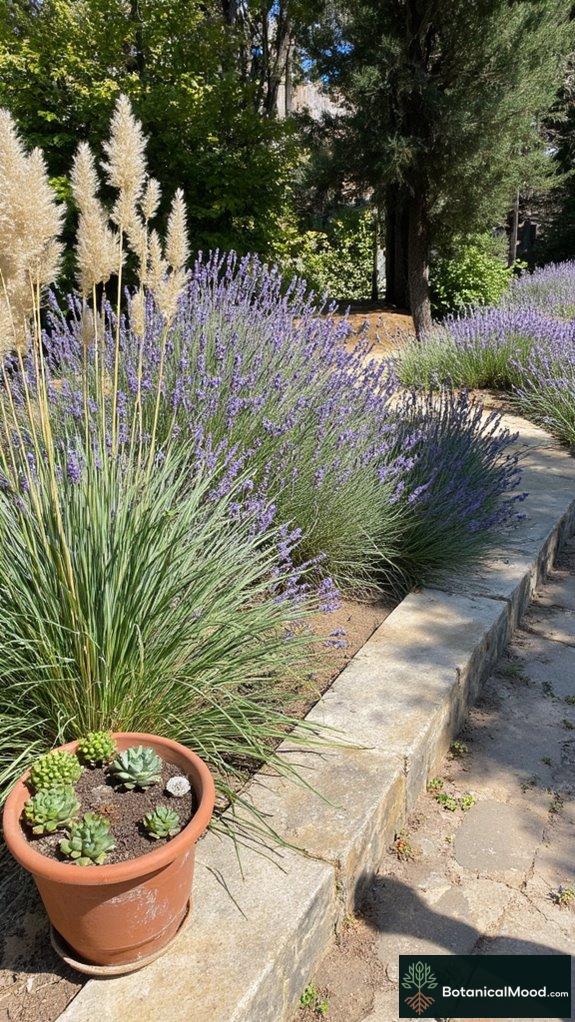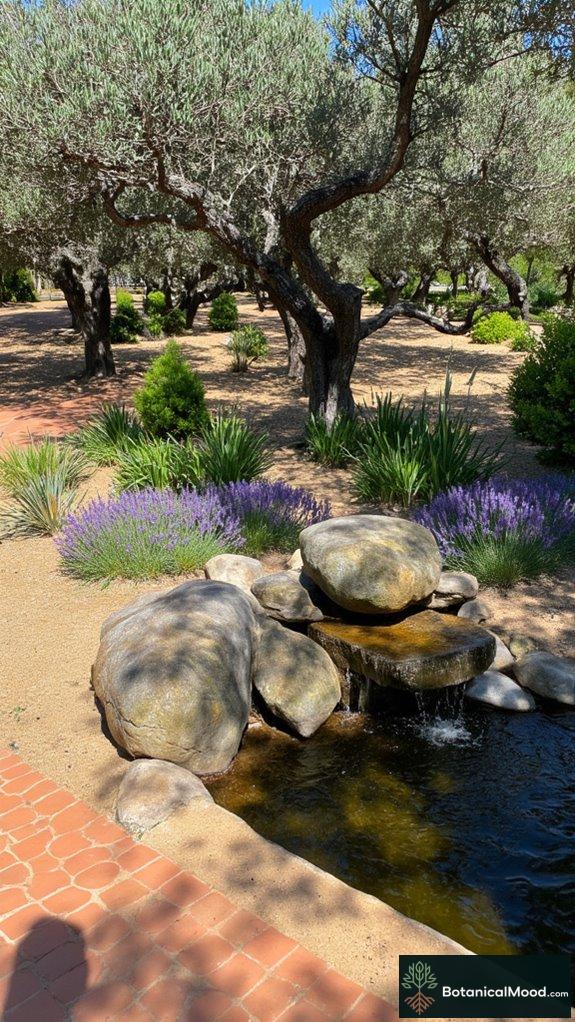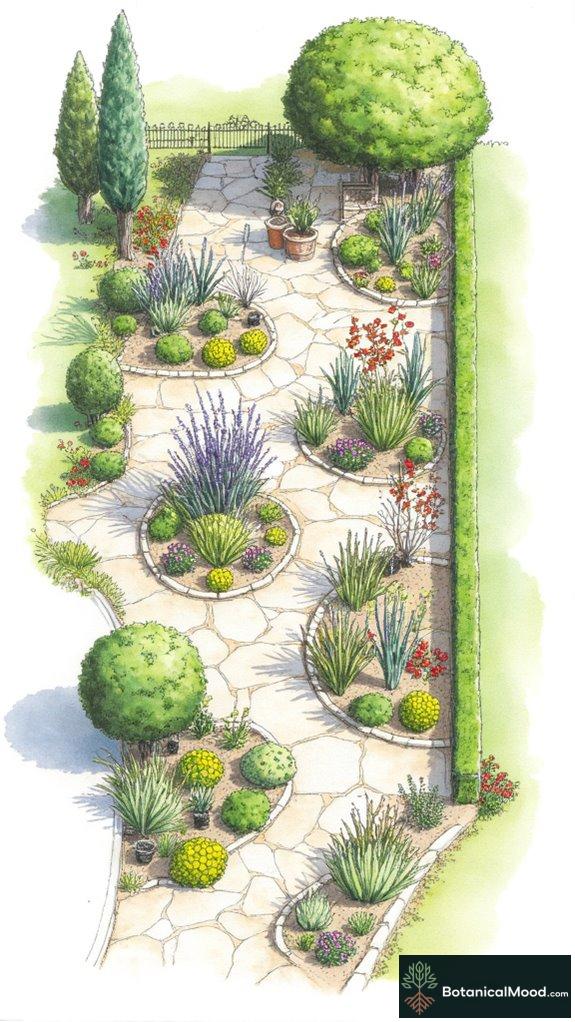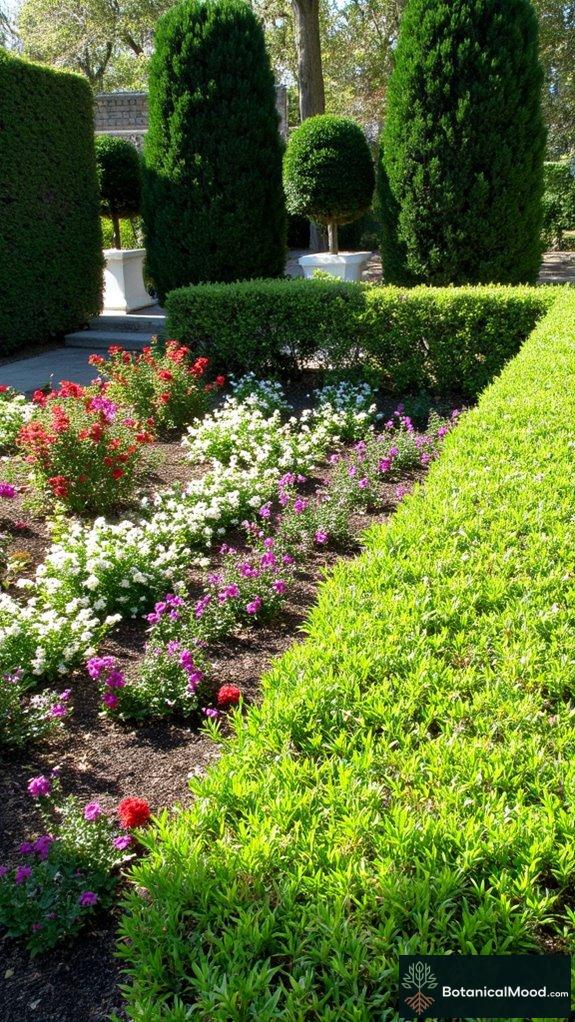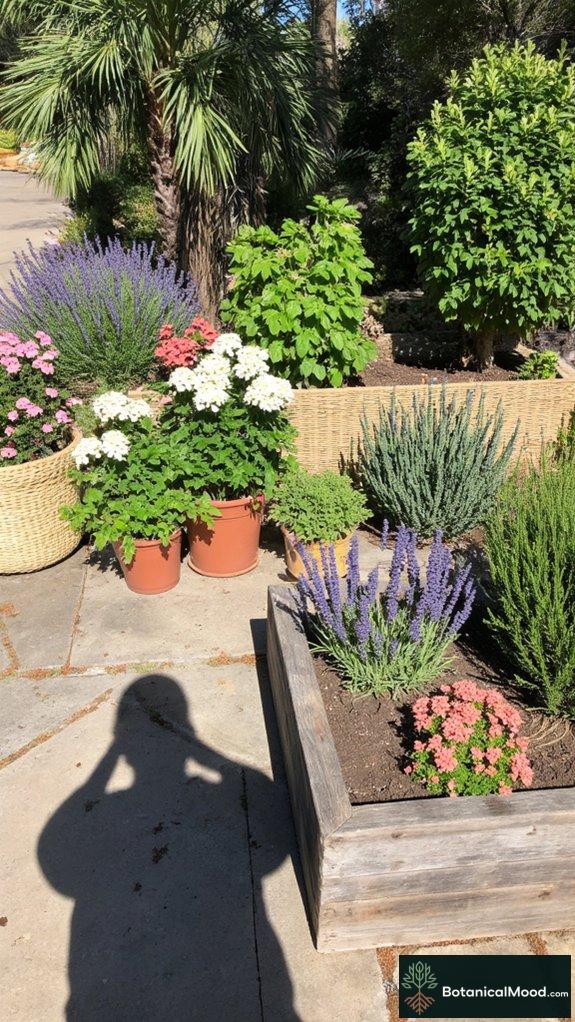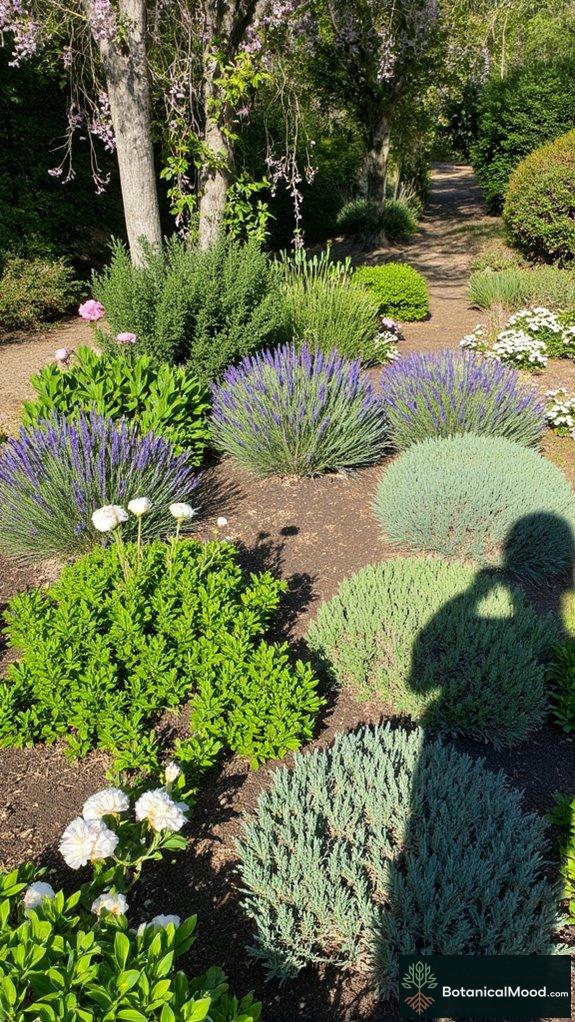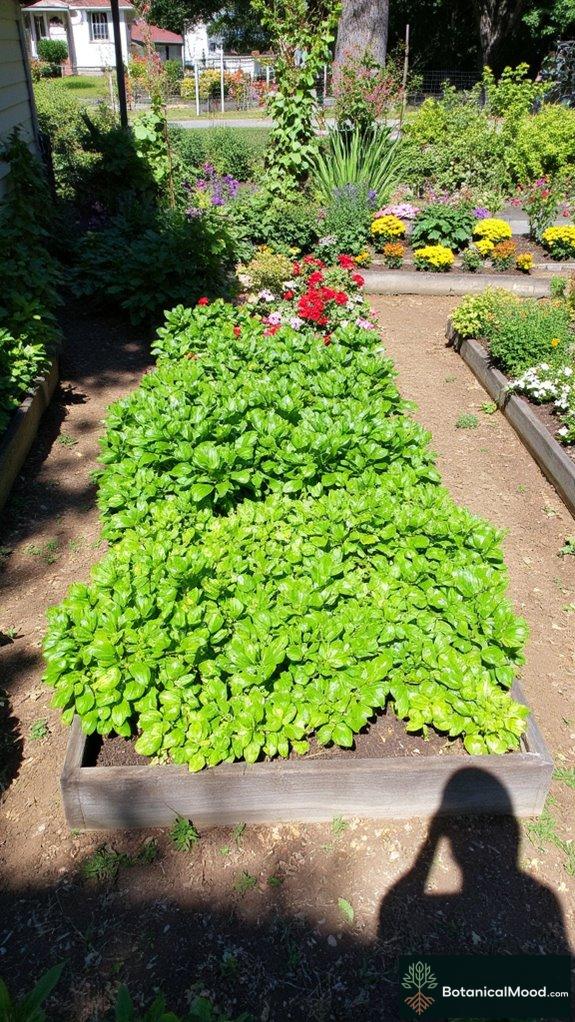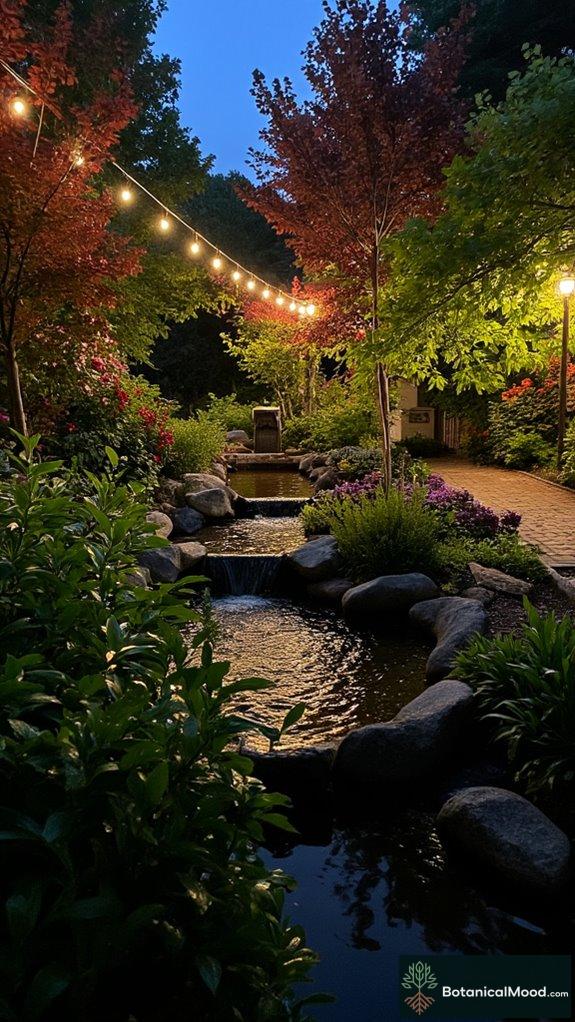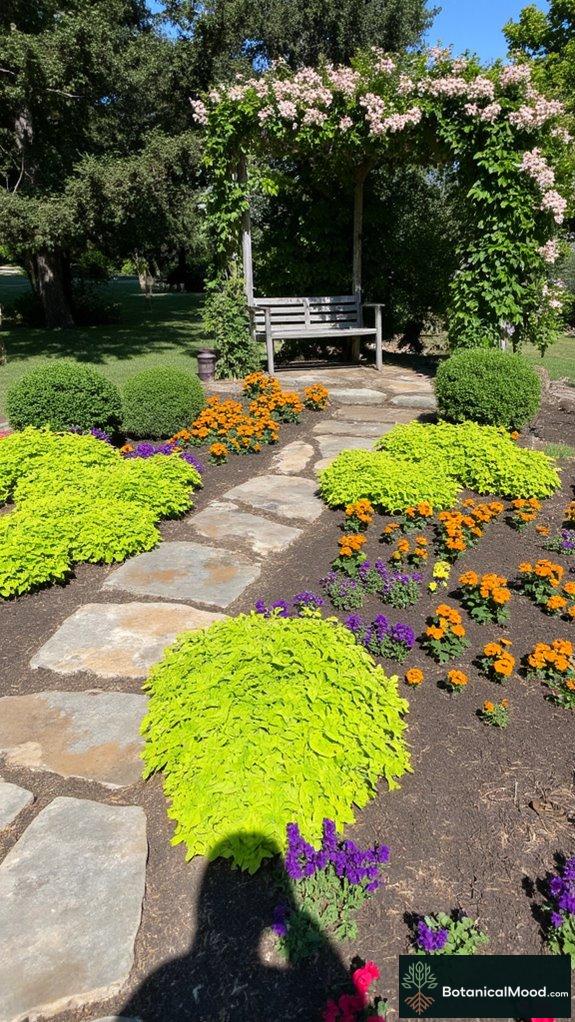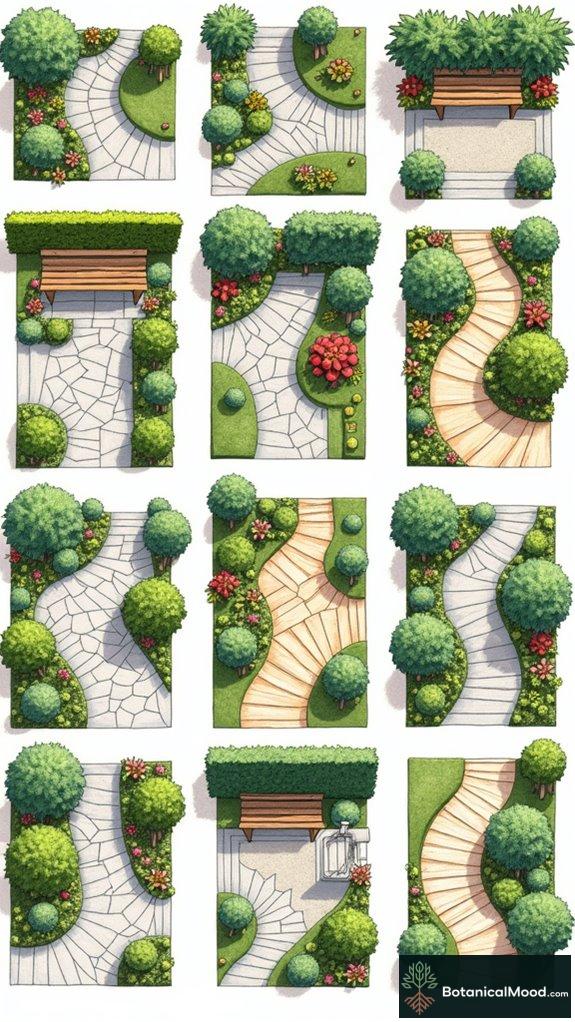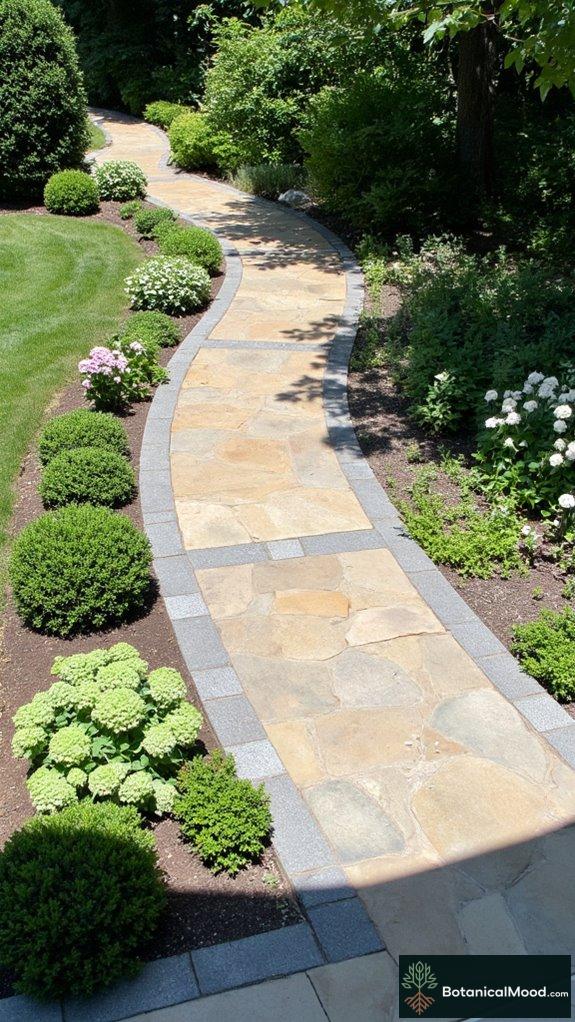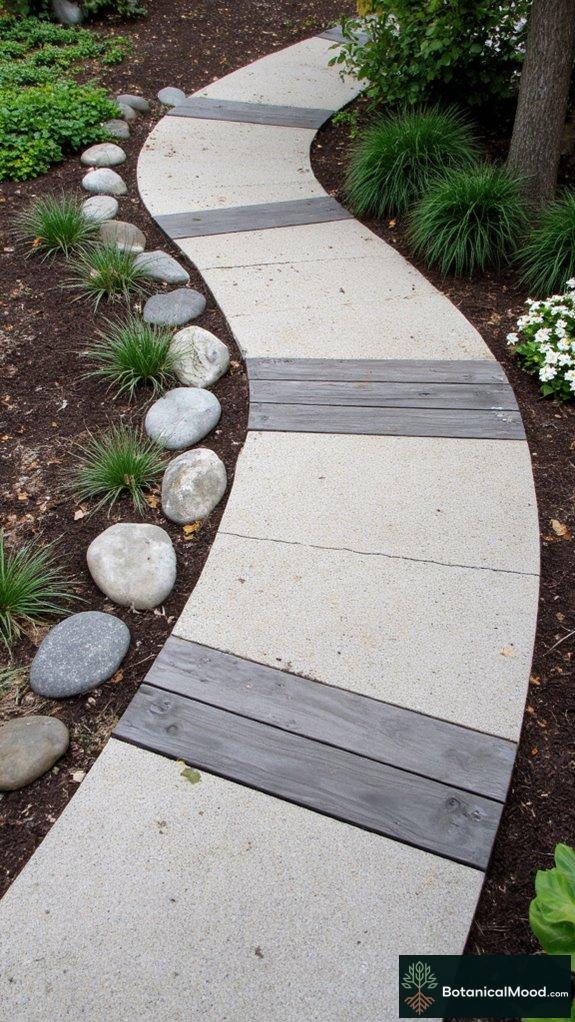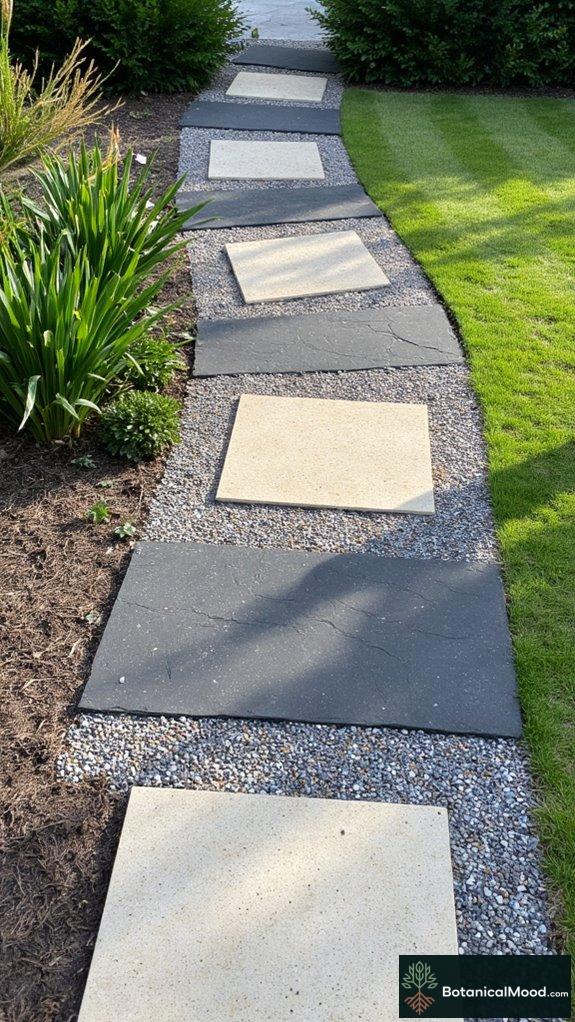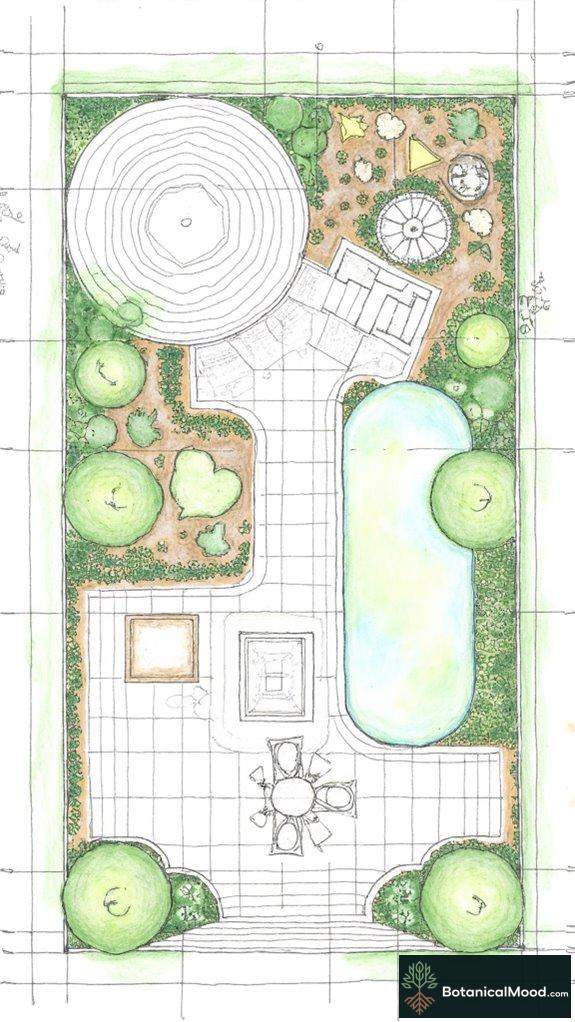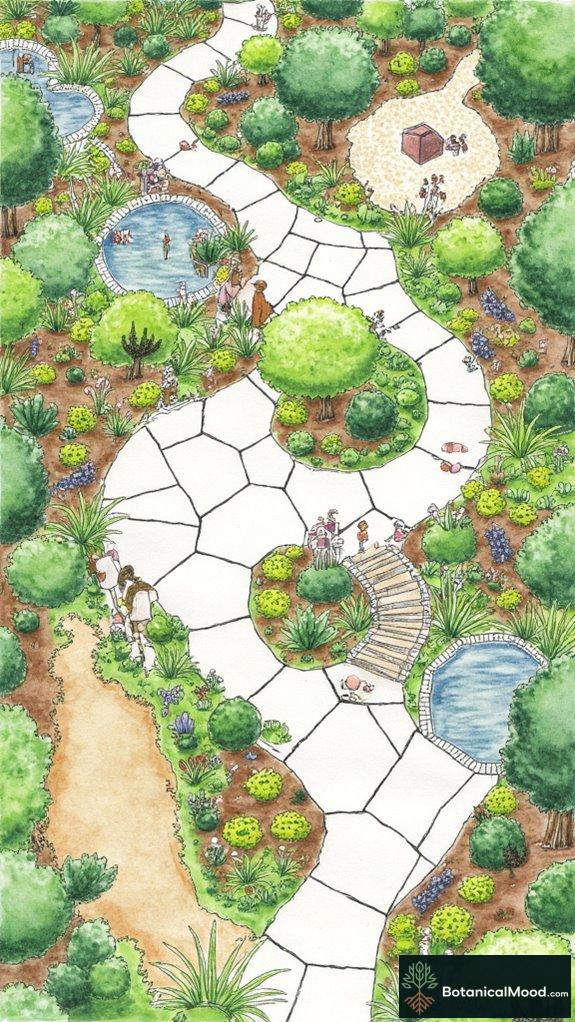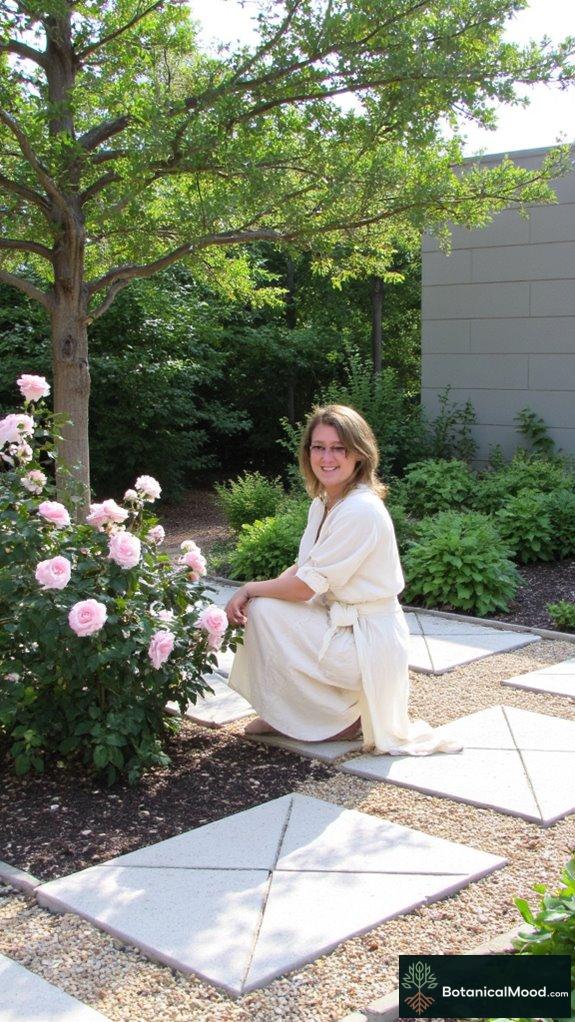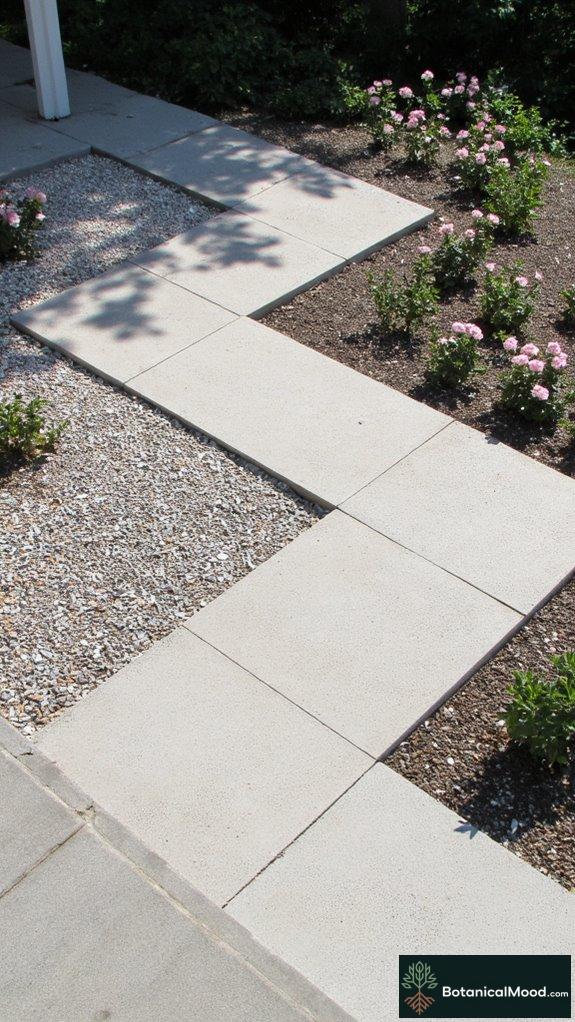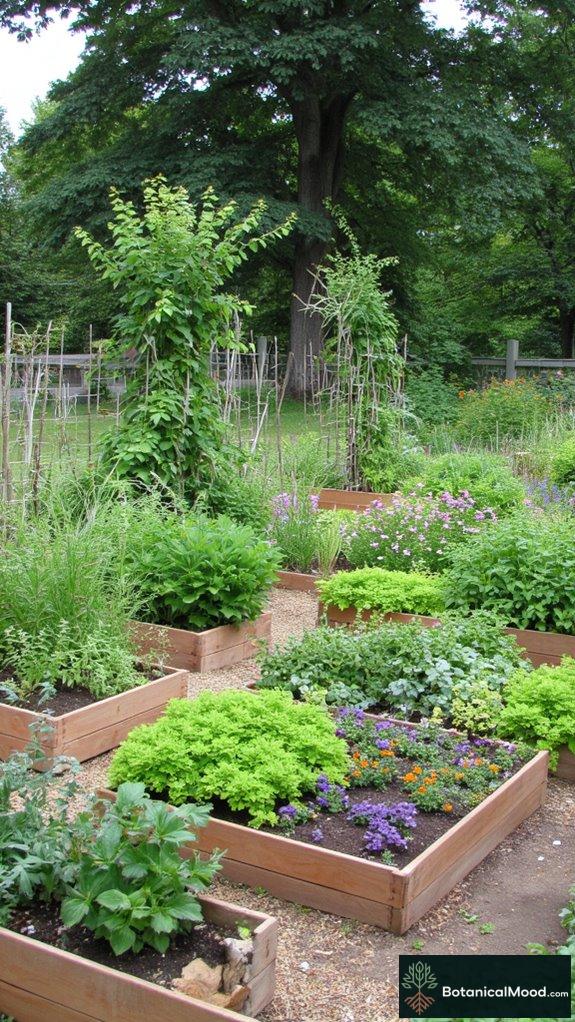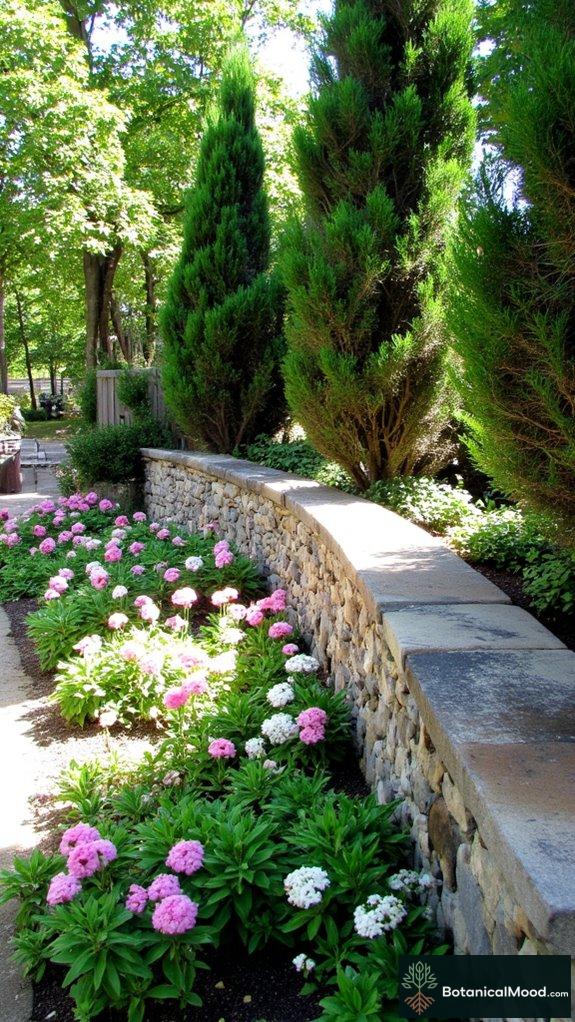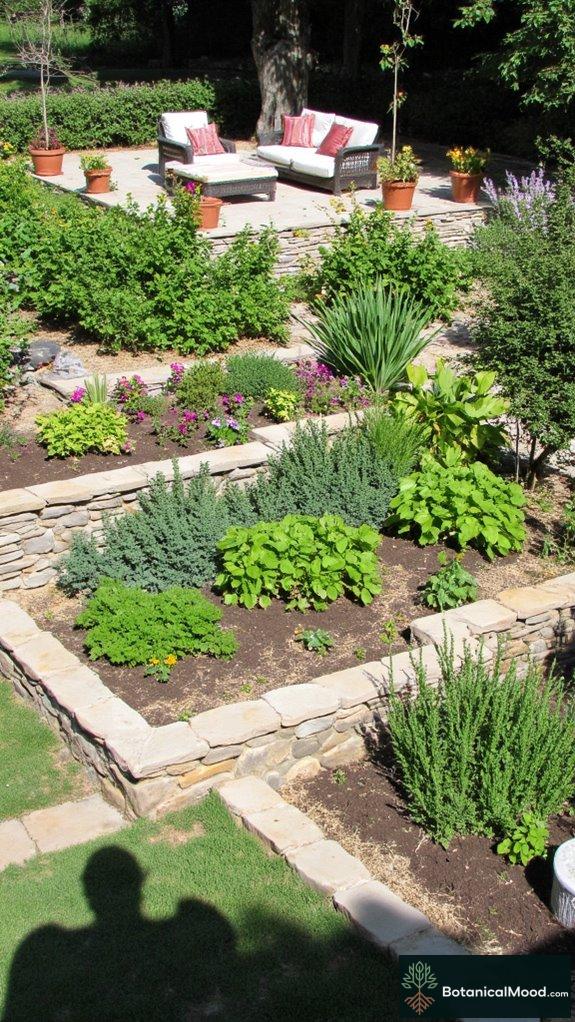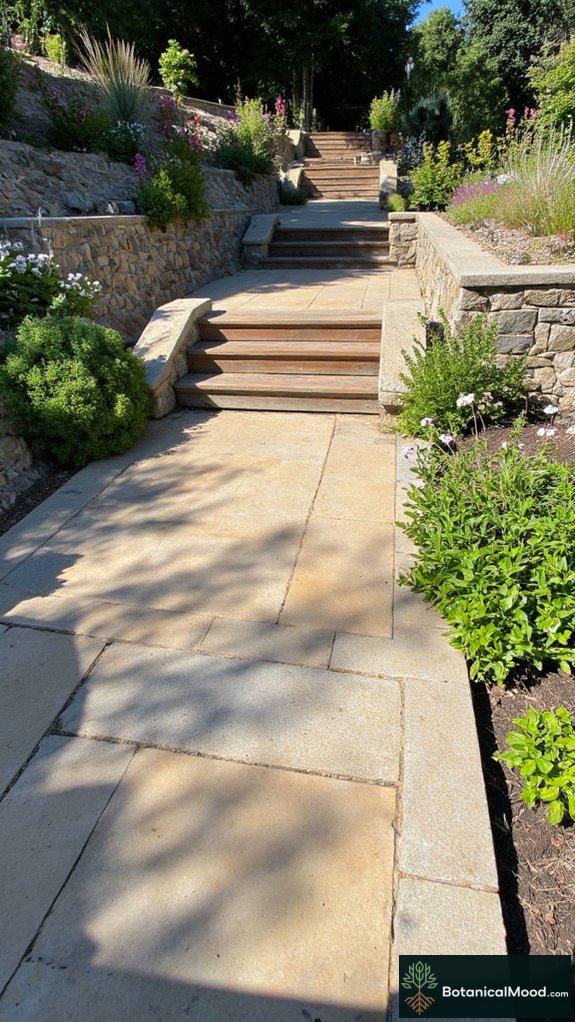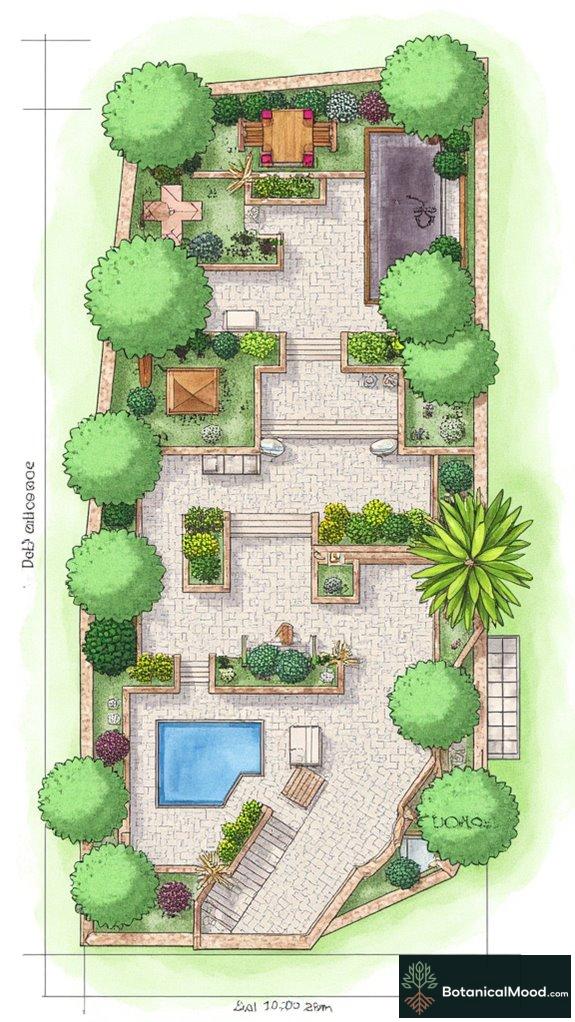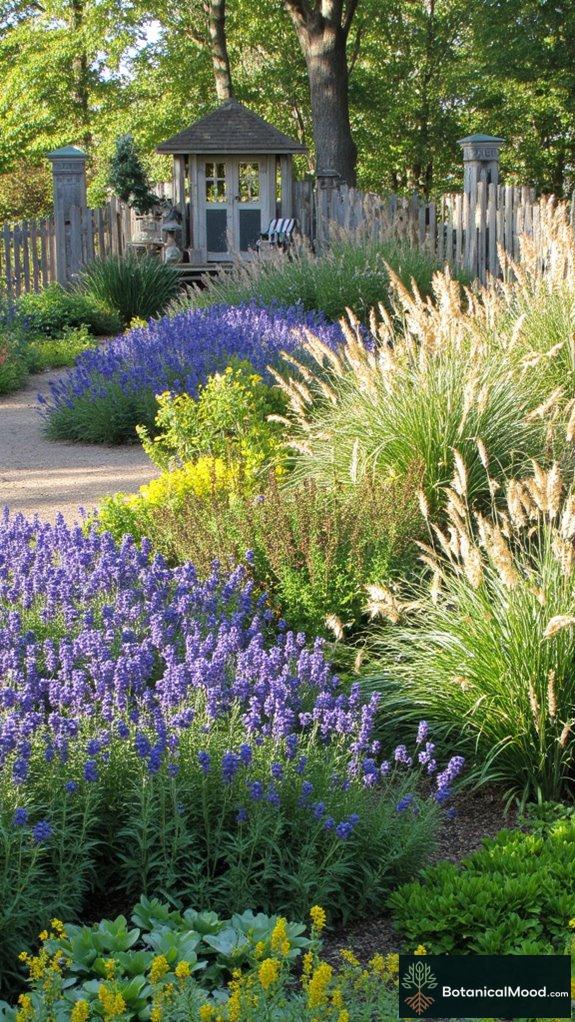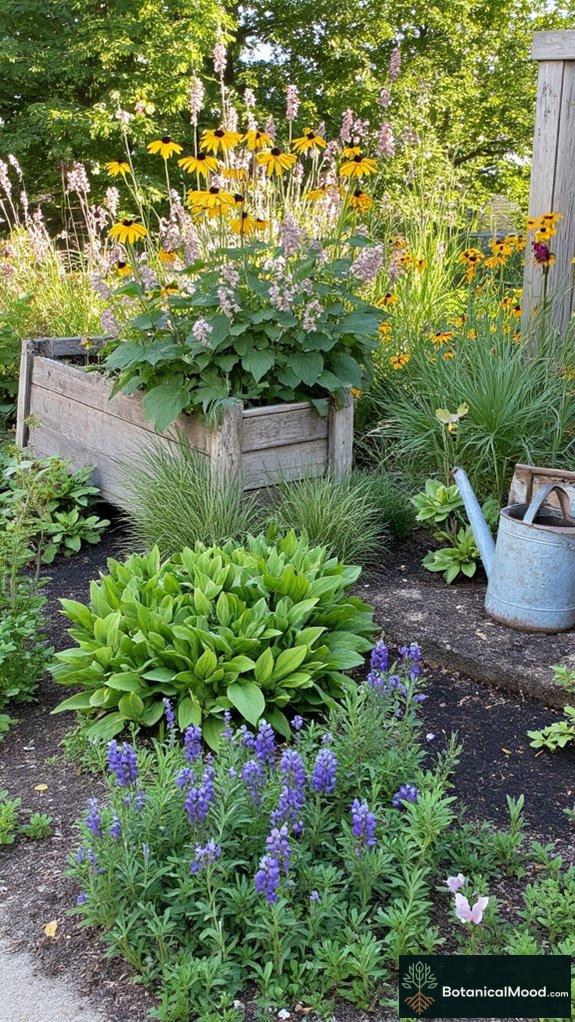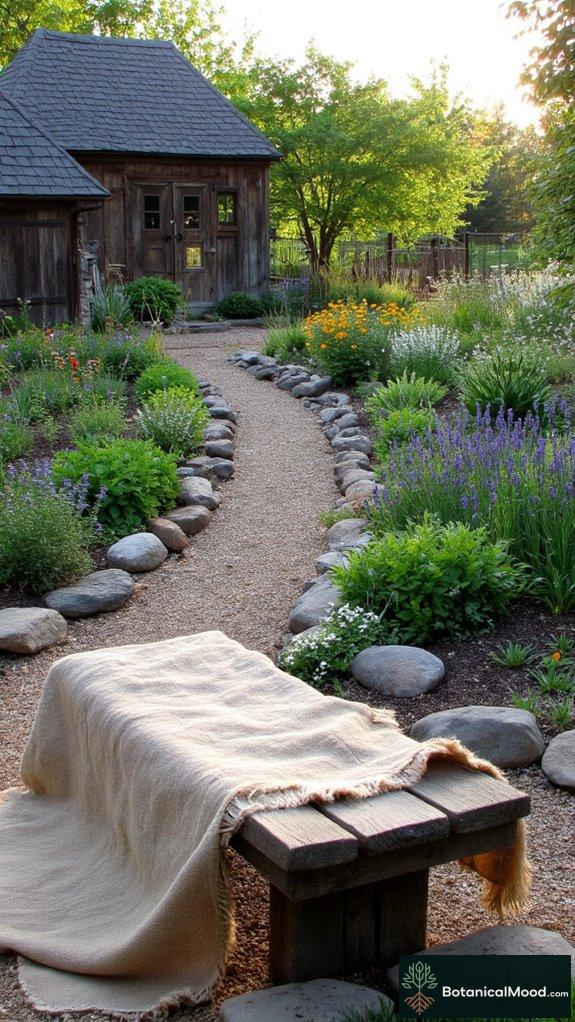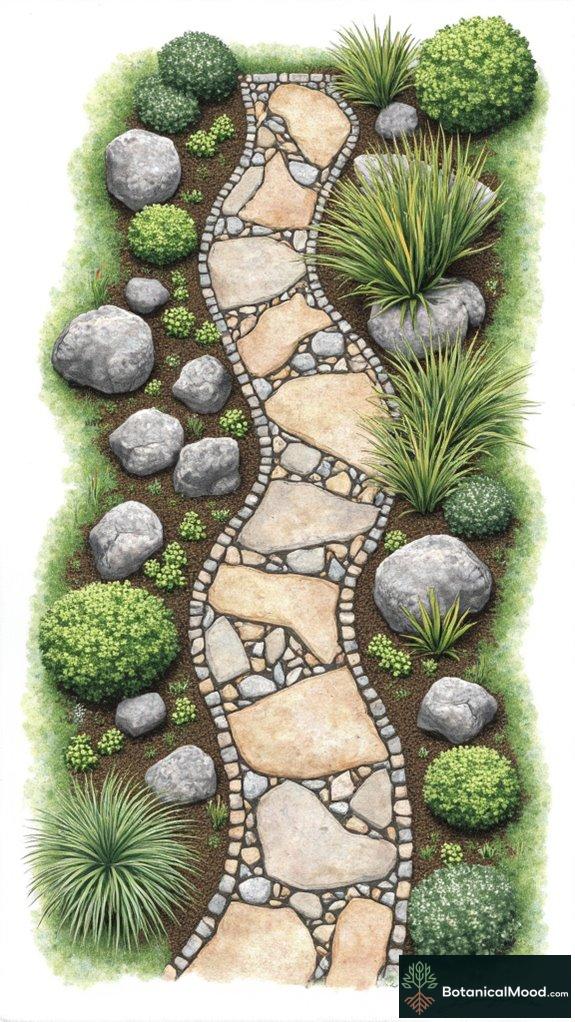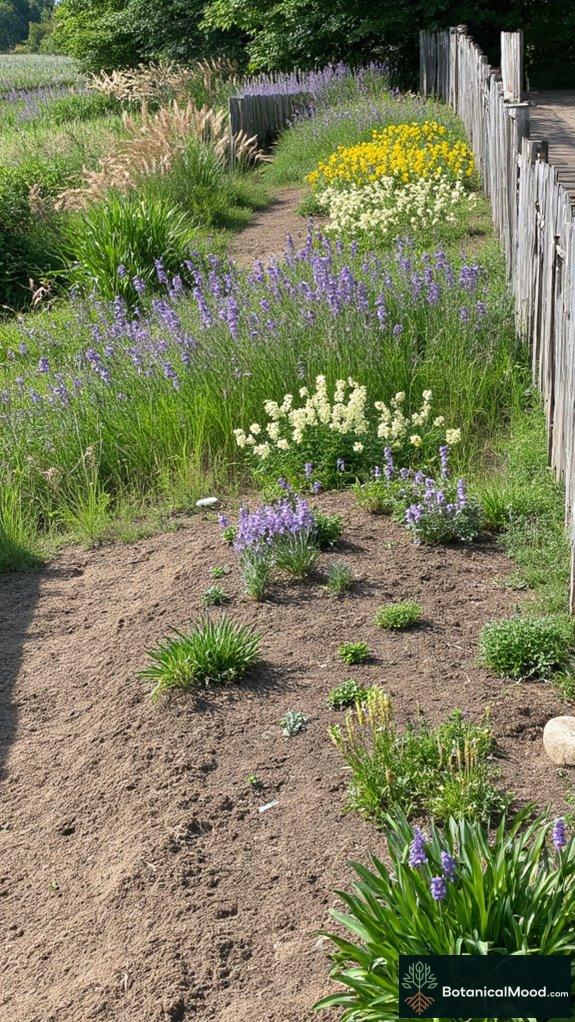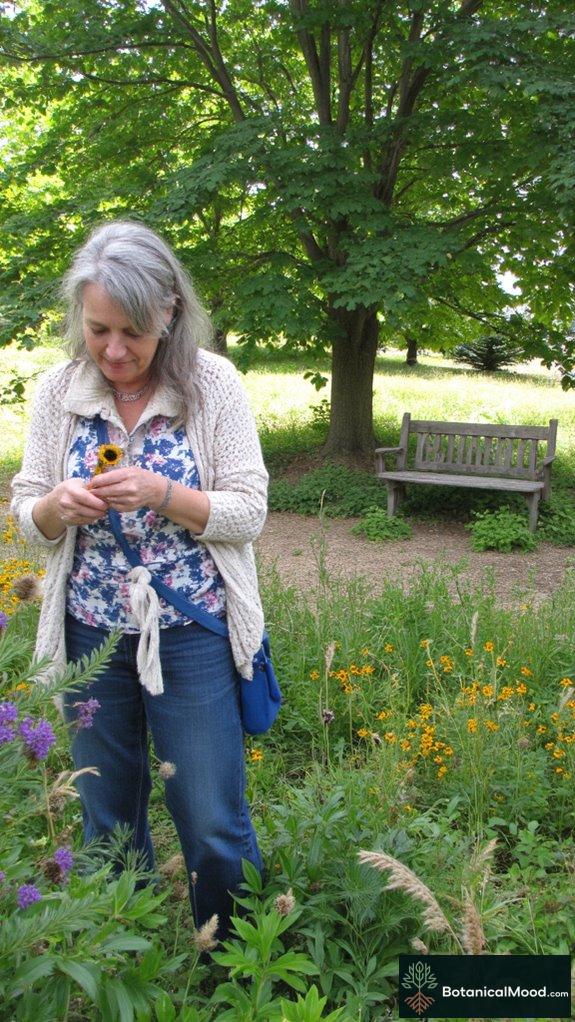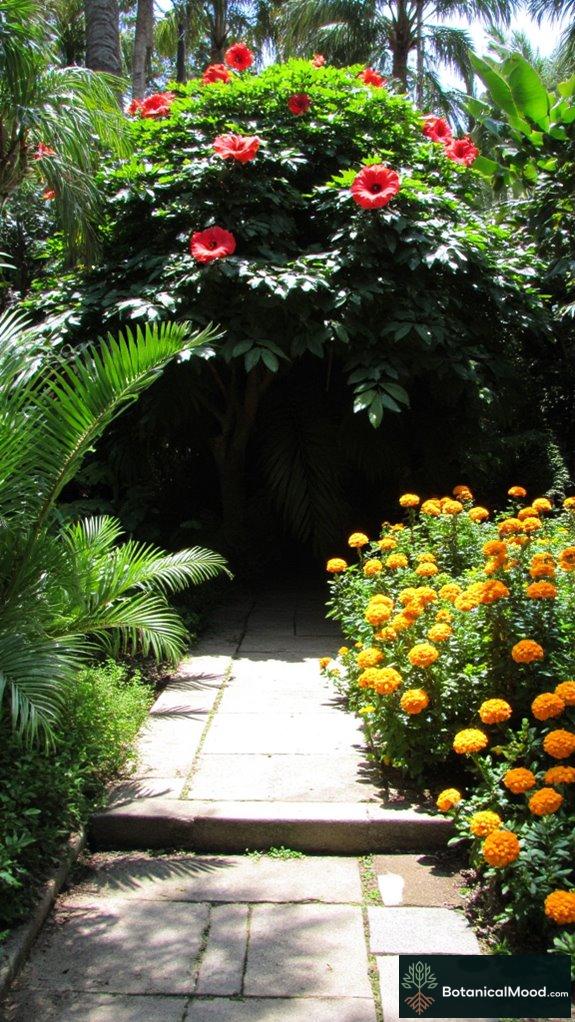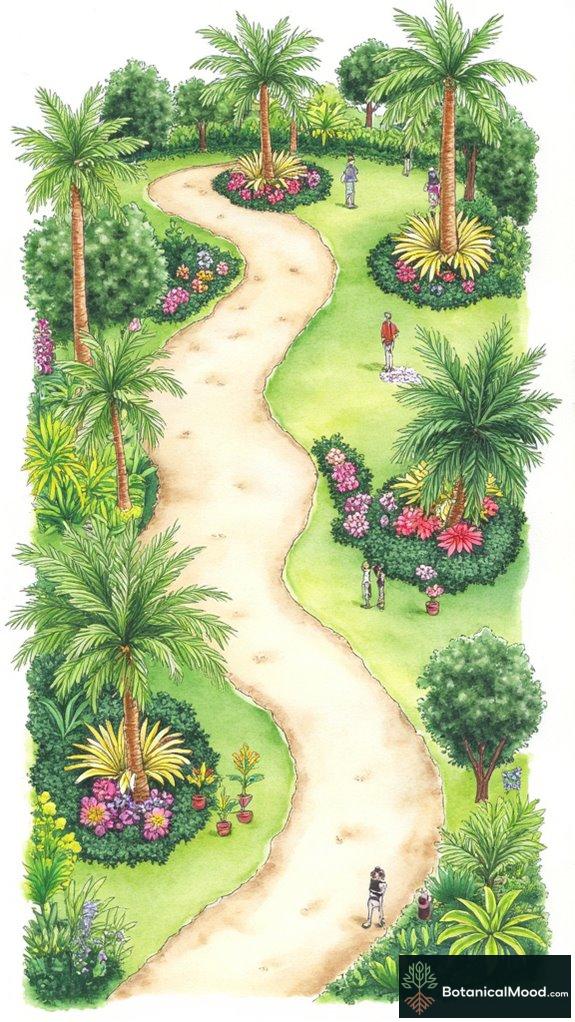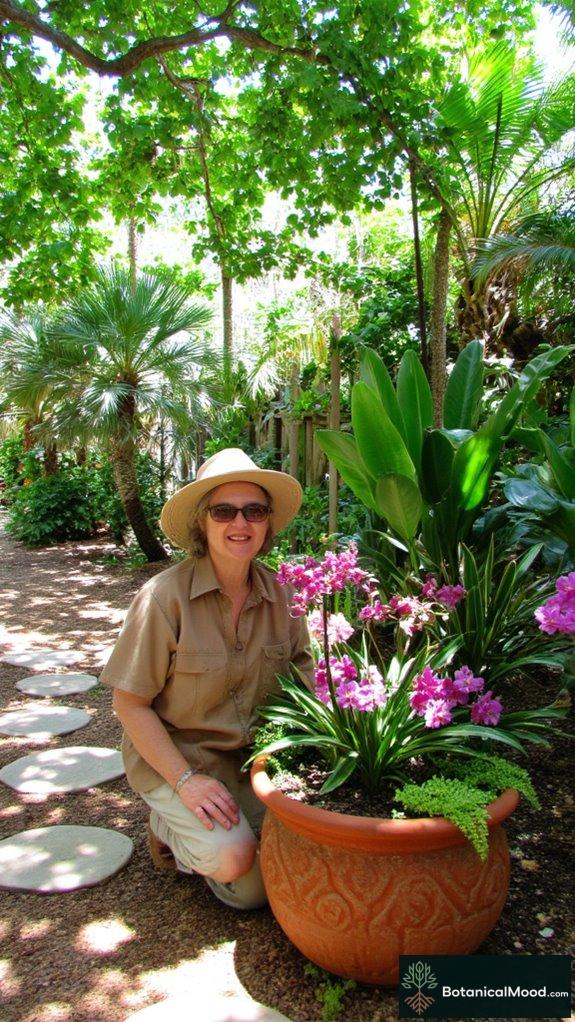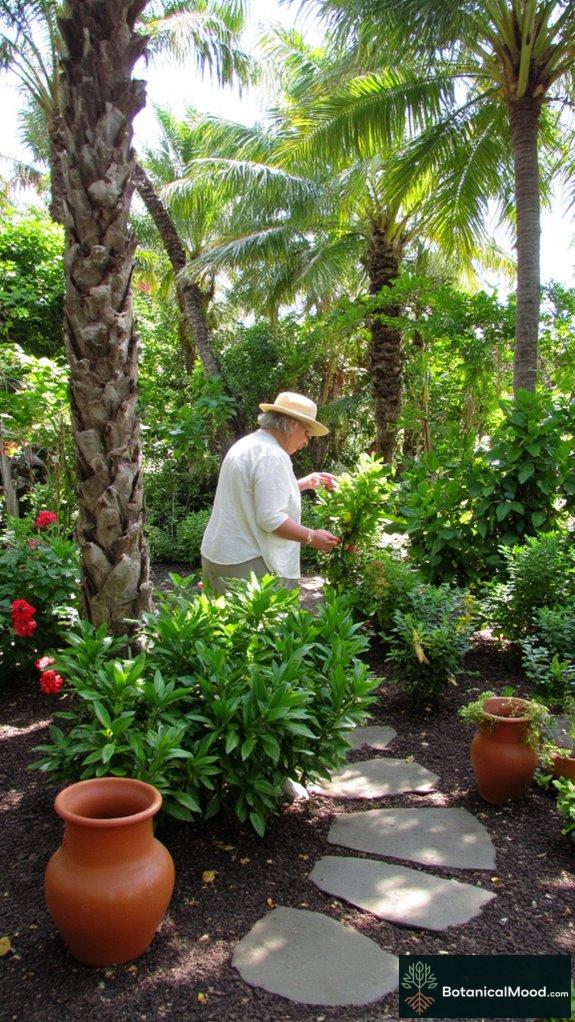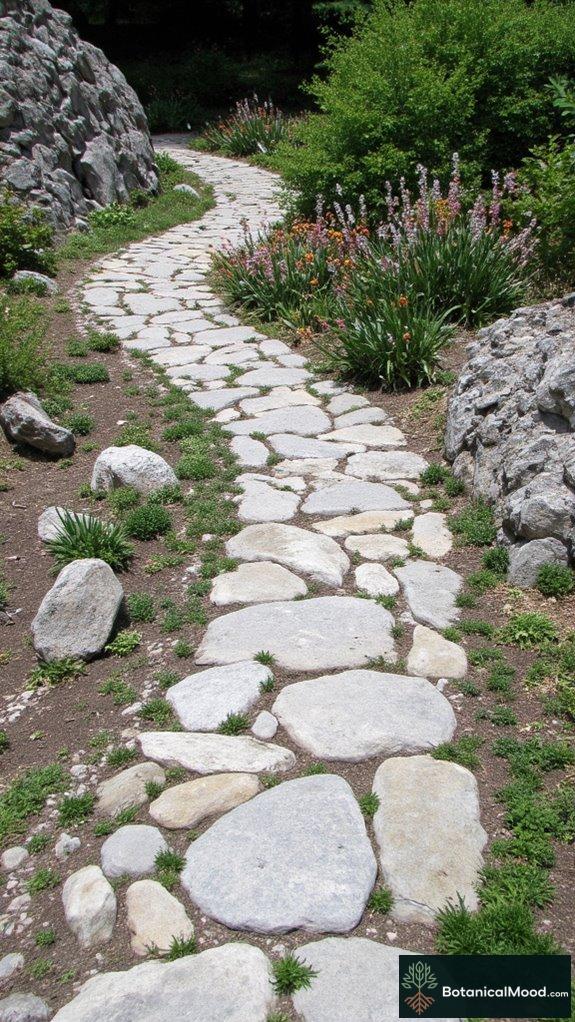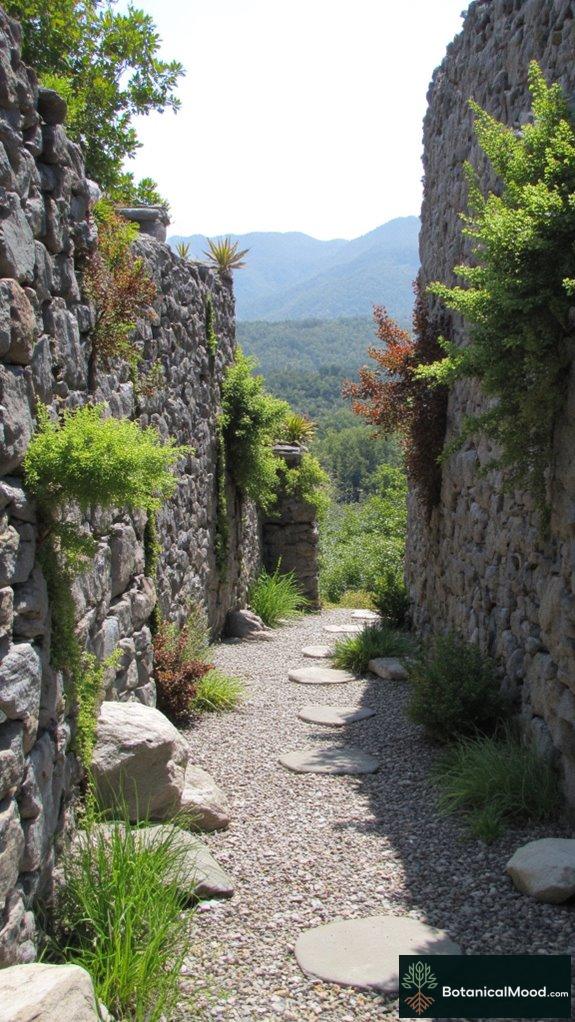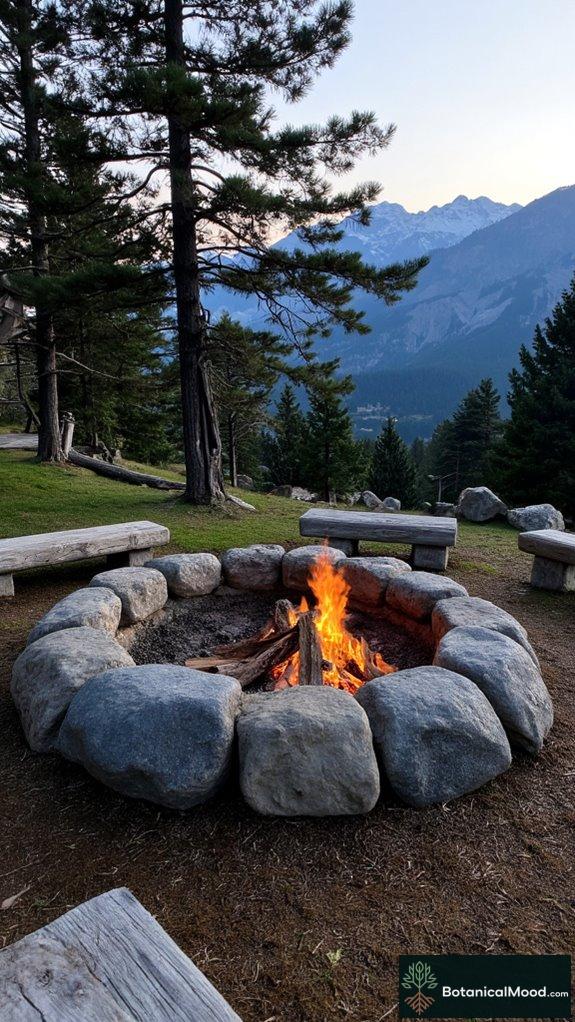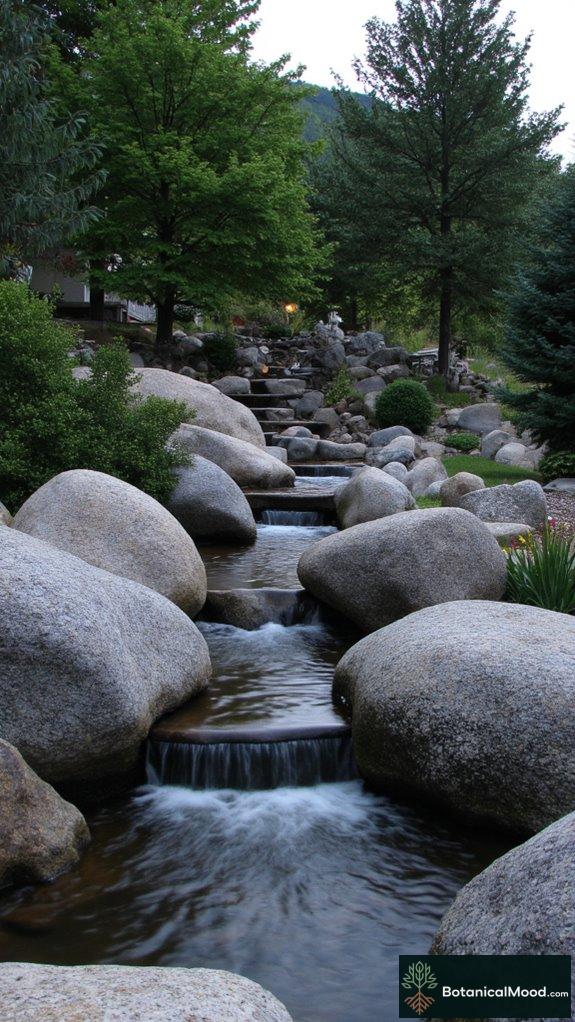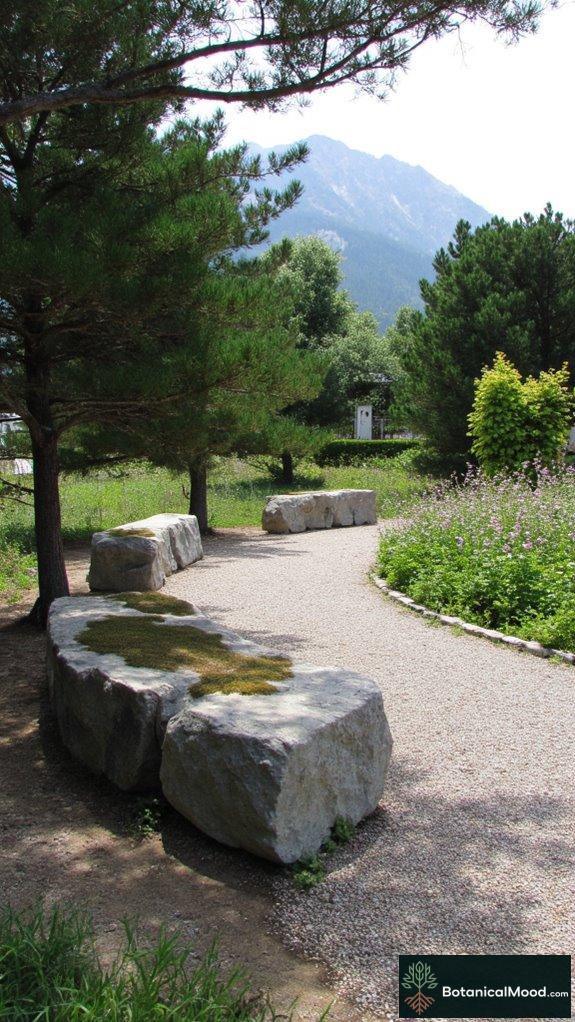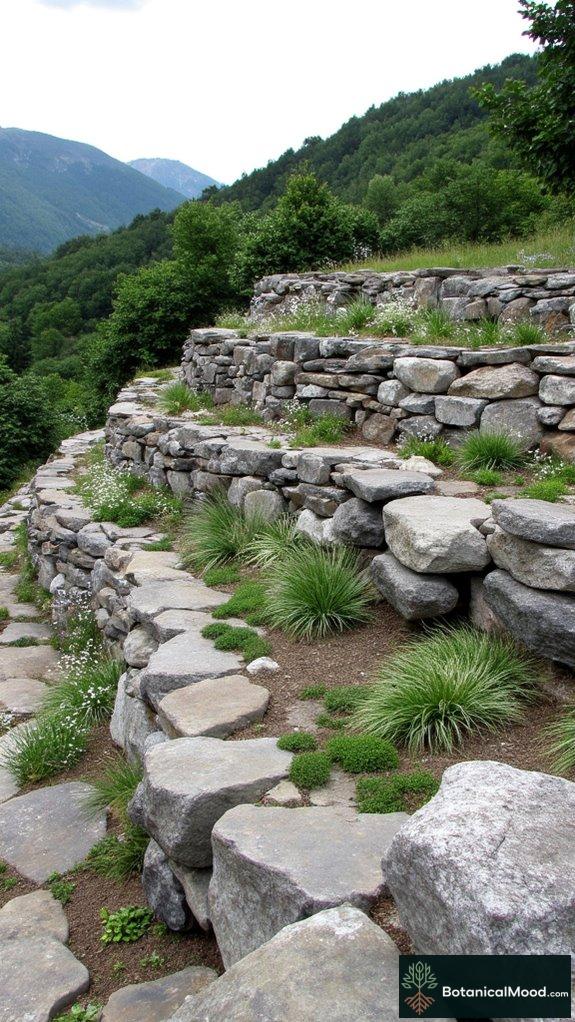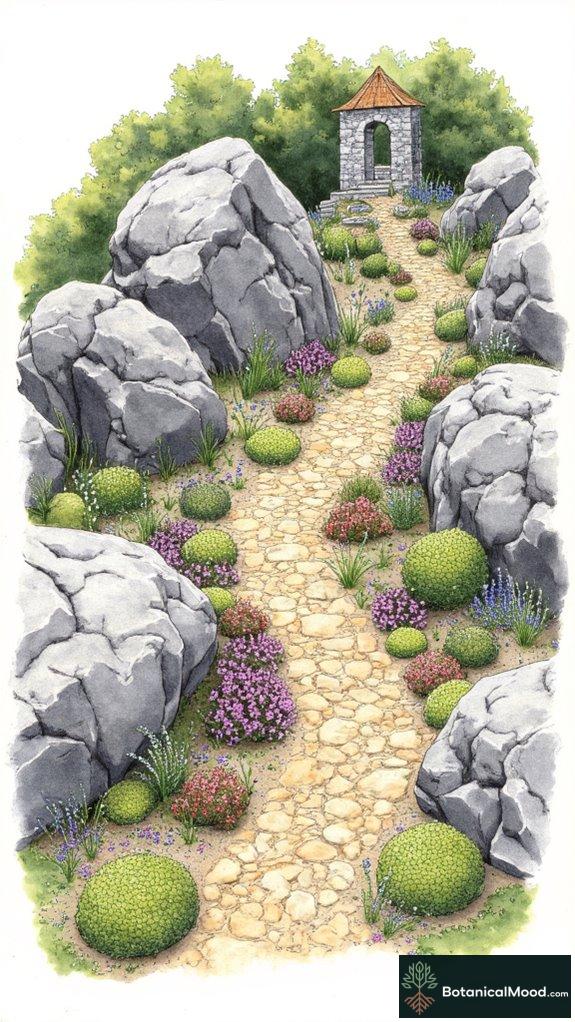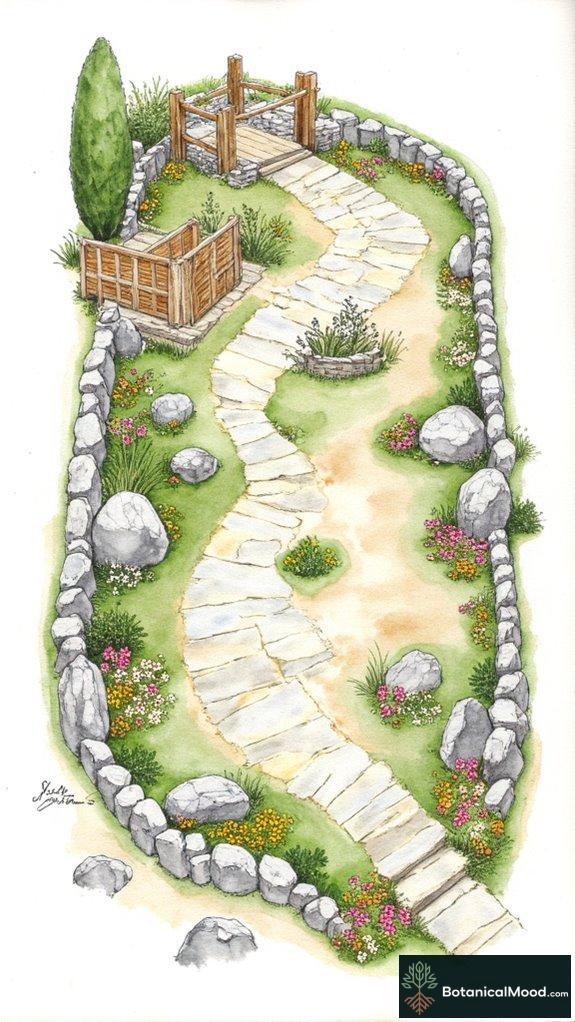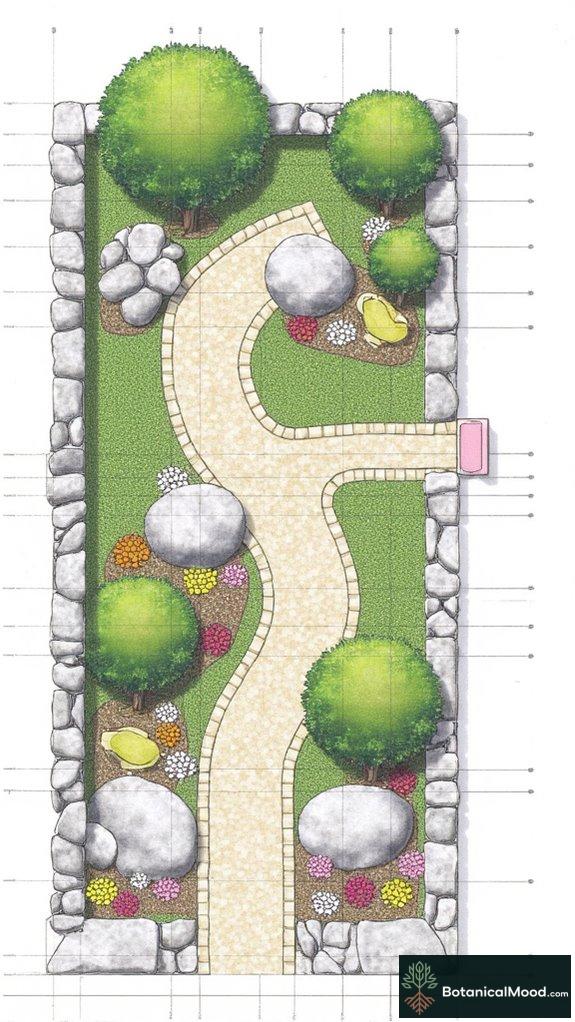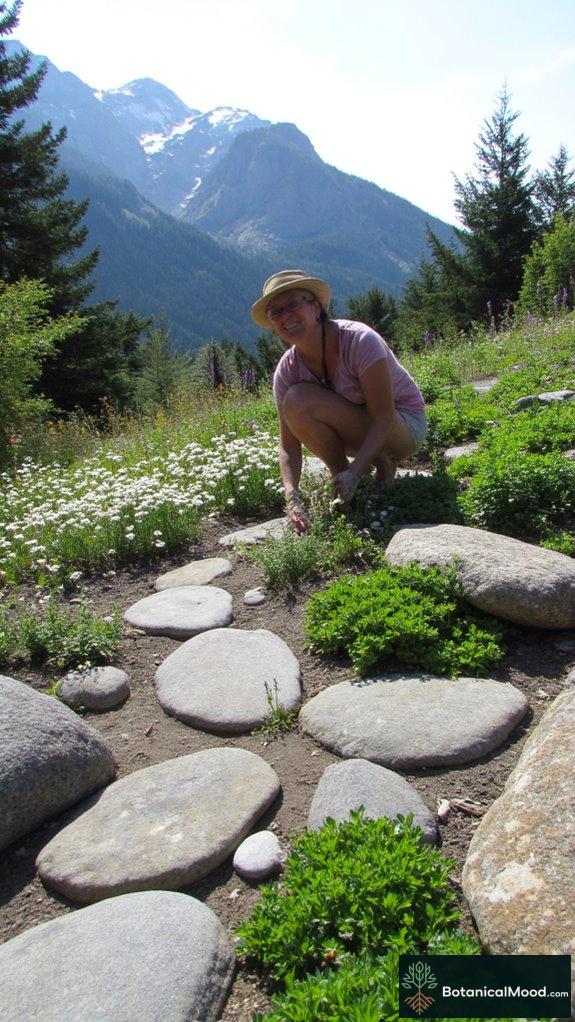Ready to level up your garden game? Let me share my hilarious journey into tiered gardens.
I never thought I’d become a garden nerd, but here I am, obsessing over curved tiers like they’re episodes of my favorite Netflix series. After countless Pinterest fails, I finally nailed my first 4-tier island design.
My go-to combo? Drought-resistant warriors like Echinacea and lavender (because I’m too lazy to water daily). The modern minimalist look with 4-foot tiers is my jam, though I secretly envy those picture-perfect cottage gardens with their overflowing daisies.
Sometimes I mix it up with Japanese Zen vibes – bamboo and curves that somehow make my morning coffee more peaceful. And when I’m feeling extra, I throw in some sassy petunias that practically scream “look at me!”
How My Garden Party Turned into a Design Masterclass
Last summer, my attempt to host a sophisticated garden party turned into an impromptu design workshop. Picture this: 15 friends squeezed onto my newly built curved tiers, wine glasses in hand, giving unsolicited advice about plant placement. The highlight? My neighbor’s shocked face when I explained how my “random” plant groupings actually followed professional color theory principles. I’d arranged Salvia, Rudbeckia, and ornamental grasses in a color-wheel pattern that accidentally became the talk of the neighborhood. Even my local garden center now uses photos of my tiered disaster-turned-success story in their weekend workshops.
Quick Takeaways
- Consider a Modern Minimalist design for sharp, structured tiers with low-maintenance plants for a clean aesthetic and harmonious balance.
- Embrace a Rustic Cottage-Inspired design with soft curves, natural materials, and plants like lavender and daisies for a cozy feel.
- Implement a Japanese Zen Garden style, featuring gently curved lines and symbolic rocks, promoting tranquility with plants like moss and Japanese maples.
- Create a Vibrant Color Burst with multi-level planting using annuals and perennials that offer complementary colors and diverse heights for a striking visual impact.
- Design an Edible Haven that combines aesthetics and functionality, incorporating accessible curved islands planted with herbs, vegetables, and fruits for a productive garden.
Modern Minimalist Tiered Design

Modern Minimalist Tiered Design
A modern minimalist tiered garden design embraces clean lines and a structured layout, typically featuring two to three levels. The planting bed measures about 4-5 feet in width and can extend up to 10-15 feet long.
It often incorporates materials like stone, wood, or concrete for an elegant look. The arrangement can follow a geometric pattern, promoting a serene atmosphere. Use drought-resistant or low-maintenance plants—like succulents, ornamental grasses, or native perennials—to enhance its simplicity. Additionally, the use of zen garden aesthetics can inspire a harmonious balance in your design.
Selecting Plants for a Minimalist Tiered Bed
When selecting plants for your minimalist tiered garden, focus on versatility and texture. Consider these options:
- Sedum varieties
- Lavender
- Ornamental grasses (like Miscanthus)
- Hostas
- Echinacea (Coneflower)
Designing Your Modern Minimalist Planting Bed
To design a minimalist tiered planting bed, follow these tips:
- Select a level layout: Guarantee your tiers are uniform and defined.
- Use a color palette: Stick to neutrals or muted shades for cohesion.
- Space strategically: Position taller plants at the back, shorter ones in the front.
- Consider height variations: Create a dynamic visual by using plants of differing heights.
Pro tip: Maintain consistent spacing (1-2 feet) between plants for airflow and growth.
Exploring Sustainable Watering Techniques
Efficient watering is essential for a thriving garden. Consider methods like drip irrigation for targeted watering, or rain barrels to collect runoff.
Using mulch can help retain soil moisture, reducing the need for frequent watering while promoting healthy plant growth.
Rustic Cottage-Inspired Curved Island

A rustic cottage-inspired curved island garden is an enchanting focal point for any yard, typically ranging from 4 to 8 feet in diameter. This layout features soft, flowing lines designed to mimic the natural shape of a cozy cottage garden.
Materials often include natural stone, reclaimed wood, or even galvanized metal to achieve a charming, weathered look. Constructed by layering soil and compost, the bed accommodates various flowering plants, herbs, and foliage, creating a multi-dimensional effect. Common choices include lavender, coneflower, and daisies, enhancing the space with texture and color. Additionally, incorporating organic contour lines into your design can elevate the aesthetic, giving it a more sculptural feel.
Selecting Plants for Your Curved Island Bed
When selecting plants for your curved island, consider both visual appeal and ecological harmony. Here are some suitable options:
- Lavender
- Black-eyed Susan
- Coral Bells
- Catmint
- Daylilies
- Shasta Daisy
Designing Your Rustic Curved Island Bed
To successfully design your rustic curved island, follow these tips:
- Plan your layout by sketching the curved outline and noting where larger plants will go for height.
- Space plants according to their mature size; allow at least 18 inches between smaller varieties and up to 2-3 feet for larger ones.
- Combine textures and colors for visual interest.
- Use a layered approach with taller plants in the back or center, progressively shortening plants towards the front for accessibility.
- Incorporate pathways if the island is larger, ensuring you can maintain plant health easily.
Enhancing Your Garden Space
To elevate your garden, consider adding whimsical decor like trellises, birdhouses, or pathways lined with stepping stones. These features complement your cottage aesthetic while inviting birds and beneficial insects, fostering a vibrant ecosystem.
Tropical Paradise With Layered Plantings

A tropical paradise with layered plantings features a tiered bed structure, typically 3-4 feet tall and 6-12 feet wide. It incorporates vibrant plants arranged in rows or tiers to create an inviting, lush look.
Common materials include treated wood, stone, or brick for sturdy containment. Start with a solid base, add drainage layers, and fill it with nutrient-rich soil to support a variety of tropical plants. Additionally, incorporating self-watering systems can enhance water retention and ensure plants receive consistent moisture during dry spells.
Selecting Plants for Your Tropical Bed
When selecting plants, consider color, texture, and height for visual appeal. Here are some suggestions:
- Bougainvillea
- Bird of Paradise
- Heliconia
- Croton
- Cannas
- Palms (e.g., Areca and Royal)
Designing Your Layered Planting Bed
To design and plan your layered bed, consider these tips:
- Choose a focal point, like a large palm.
- Mix heights: use taller plants in the back and shorter ones in the front.
- Space plants appropriately (12-36 inches apart) depending on growth habits.
- Pro tip: Group plants in odd numbers for natural aesthetics.
The Importance of Soil Quality
Quality soil is essential for a lush tropical paradise. Use organic compost and a well-draining mixture to guarantee roots thrive.
Regular amendments enhance nutrient availability and promote healthy growth throughout the seasons.
Japanese Zen Garden With Curved Elements
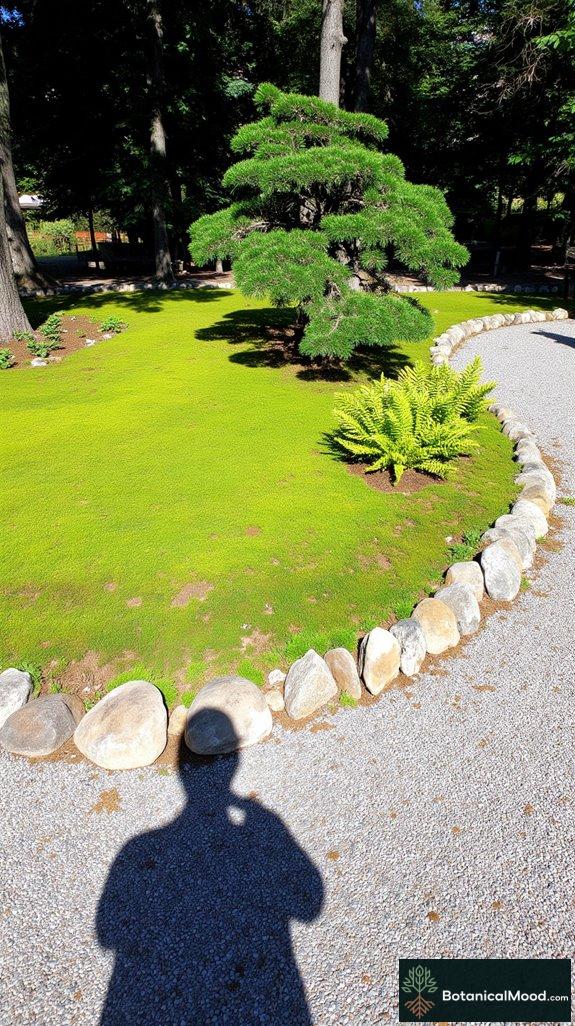
A Japanese Zen garden emphasizes tranquility and simplicity, often utilizing tiered planting beds to create harmony. These beds typically range from 3 to 6 feet wide and incorporate gently curved lines to mimic natural sceneries. Materials such as gravel, curved stones, and bamboo fencing are commonly used, creating a serene backdrop for thoughtful arrangements. Construct these beds by preparing the soil, layering gravel for drainage, and carefully placing rocks and plants in harmony with the vista. Popular plants include moss, Japanese maples, and bamboo, selected for their calming presence and graceful forms. Additionally, the use of rocks plays a crucial role in representing mountains or islands, adding another layer of meaning to the design.
Selecting Plants for Your Zen Garden
When selecting plants for your Zen garden, consider the following options:
- Moss (e.g., sheet moss)
- Japanese Maple (Acer palmatum)
- Bamboo (Phyllostachys spp.)
- Ferns (e.g., Japanese painted fern)
- Azaleas (Rhododendron spp.)
Designing a Curved Zen Garden Bed
To design your elegant curved garden bed, keep these tips in mind:
- Sketch a layout that flows with natural lines.
- Position larger plants, like Japanese maples, towards the back.
- Use moss or ground cover plants in the foreground.
- Space plants adequately at about 12-18 inches apart for visual balance.
- Employ stones as boundaries to enhance the garden’s structure.
Pro tip: Incorporate focal points, like a water feature or lantern, to enrich serenity and visual interest.
Exploring Minimalist Garden Features
Incorporating minimalist garden features can elevate your natural space. Utilize simple pathways, deliberate stone placements, and defined lines to enhance the environment.
Such elements not only promote relaxation but also create a grounding effect, inviting mindfulness in your green sanctuary.
Vibrant Color Burst in a Tiered Layout
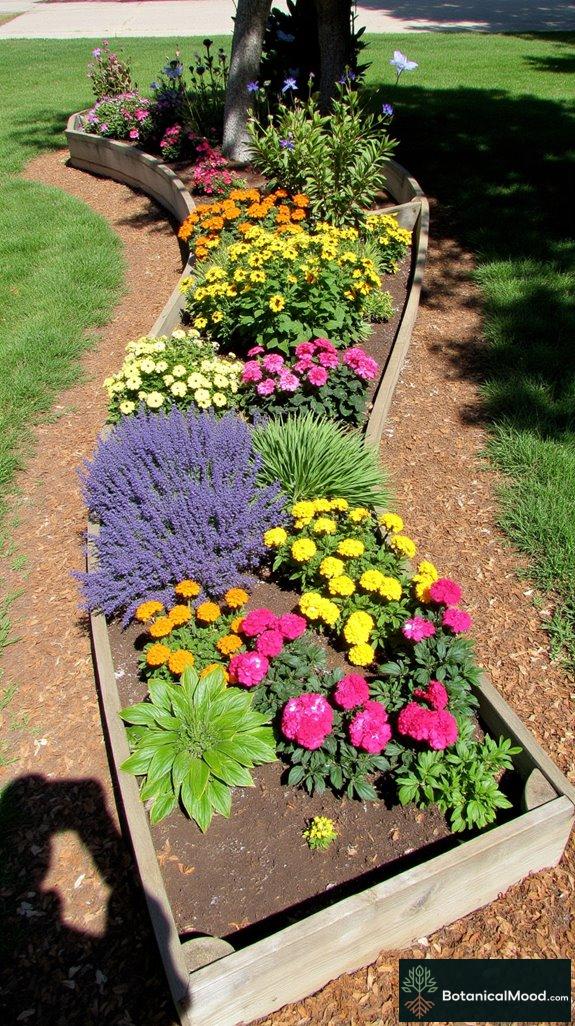
A vibrant tiered garden bed is a beautiful multi-level planting space designed to showcase colorful plants while enhancing garden depth. Typically occupying a space of 4×6 feet, the arrangement features three or more levels, ideally constructed from natural materials like wood, stone, or brick. Each level should be 12-18 inches apart, sloping slightly for drainage.
Utilize a mix of annuals and perennials, such as salvia, petunias, and lavender, ensuring a burst of color throughout the seasons.
Plant Selection for Tiered Beds
Choosing the right plants is essential. Look for varieties with complementary colors and varying heights to create a dynamic visual impact. Consider including:
- Geraniums
- Marigolds
- Coreopsis
- Astilbe
- Coneflower
Designing Your Vibrant Tiered Garden
When planning your tiered bed, envision the flow of colors and heights. Here are some helpful tips:
- Place taller plants in the back and gradually shorter ones in the front.
- Aim for a balanced color palette, mixing solid and patterned foliage.
- Allow at least 12-18 inches between plants for ideal growth.
- Use organic mulch to suppress weeds and retain moisture.
Related Gardening Strategies for Success
Integrating companion planting techniques can considerably enhance growth. Look into plant pairings to maximize crop yield and pest control.
Consider companion plants like basil with tomatoes, or marigolds with cucumbers to improve garden health.
Elegant Water Feature in a Tiered Garden

A tiered garden with an elegant water feature is a beautifully designed planting bed that incorporates varying levels, enhancing visual interest and accessibility.
The garden typically measures 4-6 feet wide and can span different heights for tiering, often utilizing materials like stone, terracotta, or wood for structure. The arrangement showcases cascading plants alongside decorative water elements, like fountains or small ponds, promoting both aesthetics and tranquility. Commonly used plants include vibrant flowers, lush ferns, and ornamental grasses that harmonize with the water theme.
A tiered garden, measuring 4-6 feet wide, beautifully blends cascading plants with serene water features for a tranquil aesthetic.
Selecting Plants for a Tiered Garden
Choosing plants for a tiered garden involves considering height, color, and bloom time. Ideal selections include:
- Astilbe (for colorful blooms)
- Hostas (for foliage variety)
- Japanese Maple (for height and structure)
- Sedum (for low maintenance)
- Water lilies (if incorporating ponds)
Designing a Tiered Garden Planting Bed
To design an effective tiered garden, follow these planning tips:
- Create distinct tiers for varying plant heights.
- Utilize retaining walls for soil support.
- Guarantee proper drainage at each level.
- Space plants according to their mature size.
Pro tips: Position taller plants at the back or center of each tier and group plants by color and texture for impactful aesthetics. Always leave space for growth to prevent overcrowding.
Seasonal Maintenance Tips for Gardens
Seasonal maintenance is essential for vibrant tiered gardens. Regularly check soil moisture, prune dead foliage, and replenish mulch to maintain stability and aesthetics.
During winter, protect sensitive plants with burlap wrapping or mulch to guarantee survivability, and plan for spring planting by evaluating yearly bloomers.
Edible Haven: A Functional Curved Island
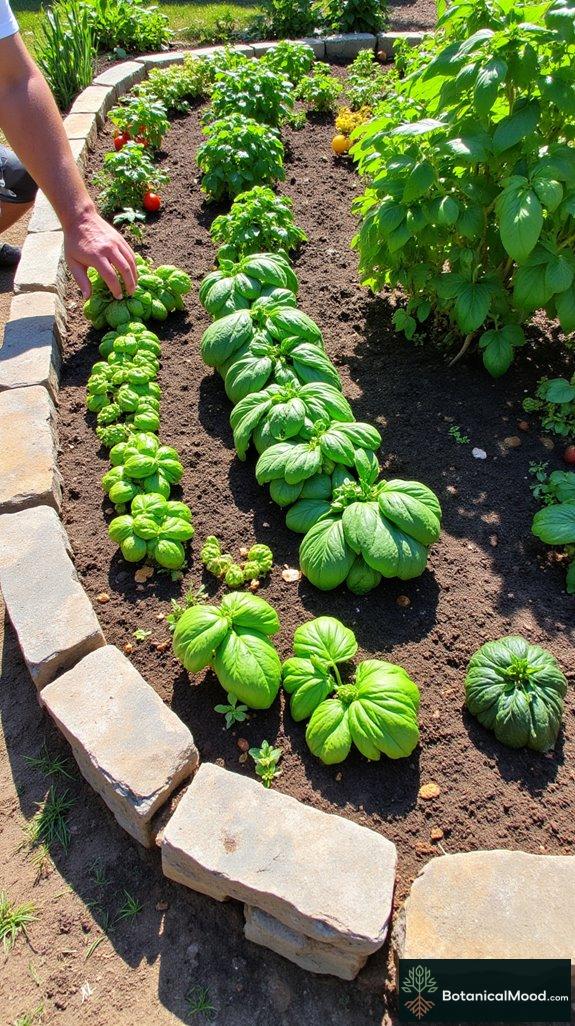
An edible haven, a curved island planting bed is a visually appealing and functional addition to any garden. Typically measuring about 4 to 6 feet in diameter, this bed features a soft, flowing shape that allows easy access for harvesting. Constructed using natural stone, brick, or untreated wood, the sides offer durability while blending with the environment.
Fill the bed with nutrient-rich soil and create a tiered effect for better sunlight exposure. Ideal plants include a mix of herbs, vegetables, and fruits, such as tomatoes, basil, strawberries, and peppers.
Selecting Plants for Your Curved Island Bed
Choosing the right plants enhances both beauty and functionality. Consider these options for your edible haven:
- Basil
- Chives
- Spinach
- Cherry tomatoes
- Radishes
- Peppers
- Strawberries
Designing and Planning Your Planting Bed
Successful design is essential for your curved island bed. Follow these tips:
- Plan your layout to allow accessibility from all sides.
- Group plants by height—tall plants should go towards the back.
- Space plants adequately to promote airflow: 12-18 inches for larger crops and 6-12 inches for herbs.
- Use companion planting to enhance growth and pest resistance, such as pairing tomatoes with basil.
Exploring Vertical Gardening Techniques
Vertical gardening offers an efficient solution for small spaces. Utilizing trellises or wall planters, gardeners create additional planting spaces while allowing climbing plants like cucumbers and peas to flourish.
When using vertical systems, guarantee adequate sunlight exposure and regular watering for a bountiful harvest.
Plant Bed Seasonal Upkeep
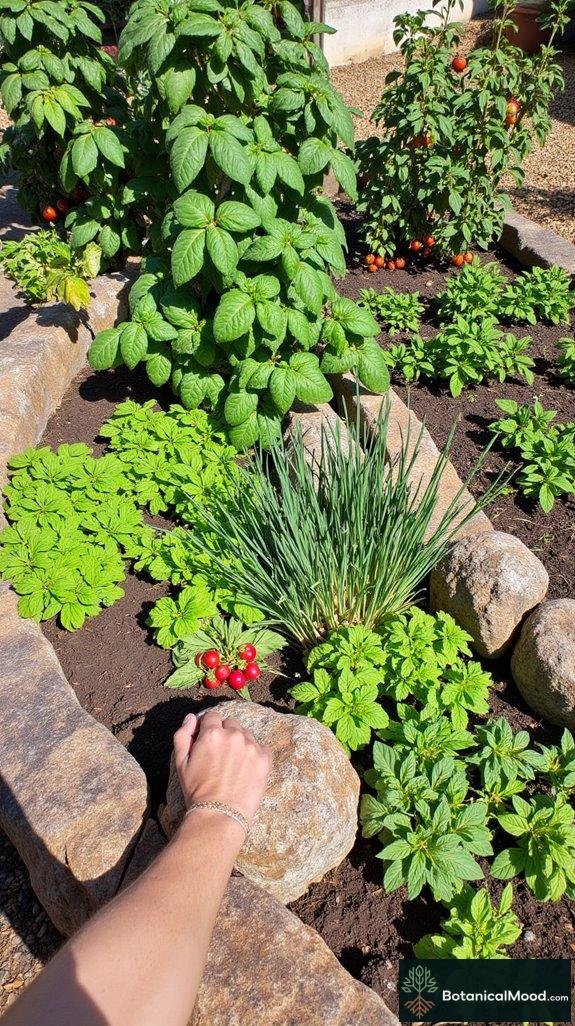
Maintaining the vibrancy and productivity of your curved island edible haven throughout the seasons requires strategic planning and regular attention.
To keep your plant beds thriving, seasonal pruning is essential. I carefully trim back overgrown branches and dead foliage, allowing sunlight and air circulation to reach every plant, enhancing growth.
Seasonal pruning is key to vibrant growth, ensuring sunlight and air circulate freely to every plant.
Furthermore, I implement soil amendments like compost (Humus) and organic fertilizers to guarantee nutrient-rich earth, promoting robust produce.
Monitoring moisture levels and adjusting watering schedules helps, too. By dedicating time to these tasks, I not only enrich my garden but also nurture a space that joyfully serves friends and family through bountiful harvests.
FAQ
What Materials Are Best for Constructing Tiered Garden Islands?
I believe wooden structures and stone terraces are the best materials for constructing tiered garden islands. They create a warm, inviting atmosphere while ensuring stability and beauty, serving both your garden’s aesthetics and function beautifully.
How Do I Choose Plants for My Tiered Garden?
To choose plants for my tiered garden, I consider plant compatibility and color harmony; it’s like arranging a symphony. Each plant adds a unique note, creating beauty that serves both nature and those who admire it.
Are There Specific Irrigation Techniques for Tiered Gardens?
Yes, I’ve found drip irrigation works wonders for tiered gardens. It delivers precise water directly to roots, while gravity flow guarantees even distribution. This way, I’m helping my plants thrive while being efficient with water usage.
Can Tiered Gardens Be Built on Sloped Land?
You can definitely build tiered structures on sloped landscaping! I’ve seen it transform a tricky terrain into a stunning feature. With thoughtful design, you can create inviting spaces that truly serve your garden’s needs.
What Maintenance Practices Are Needed for Tiered Garden Designs?
To maintain my tiered garden, I focus on regular pruning strategies and guarantee ideal soil health. By doing this, I create a thriving environment for plants, ultimately serving the needs of my garden and its visitors.
Summary
I transformed my garden with tiered curved islands, creating layers of Heliopsis helianthoides and cascading ferns. My space now flows from one level to another, whether I’m going for a zen-like retreat or a vibrant tropical feel. Nature’s curves inspire my design choices daily.
Tell us about your experience with tiered garden designs. Have you tried creating curved islands in your outdoor space? What challenges or successes did you encounter while building your multi-level garden?
Show us your garden’s transformation! Share photos of your tiered designs and tell us about your planning process. Did you follow a specific style, or did you create something uniquely yours? We’d love to see your creative solutions for different elevation levels.






